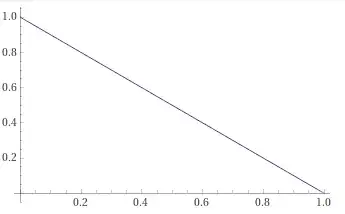The definition of perfect security is just that: $Pr(M =m | C=c) = Pr(M=m)$. We can prove that one time pad is perfectly secure for any distribution on a message space $M$, and it happens to be that the keyspace $K$ has a uniform distribution. Does that have to be true?
For example, let's say $M= \{0 \}$, $K=\{ 0,1 \}$ where $0$ is chosen with probability $p$ and $1$ chosen with probability $1-p$. Then we could have $c = m \oplus k$, and $c=0$ with probability $p$ and $c=1$ with probability $1-p$. Is this perfectly secure if $p \neq \frac12$?
